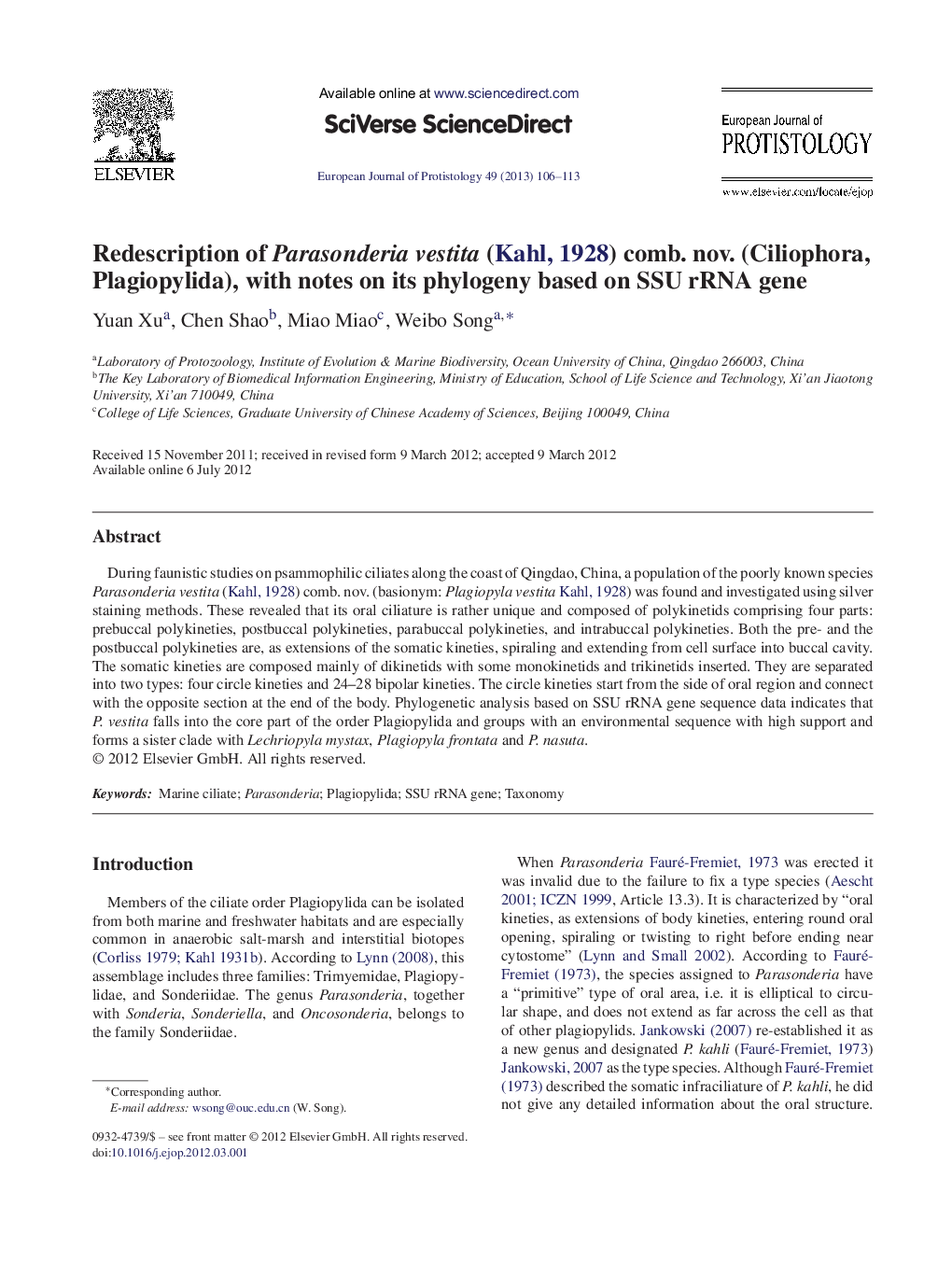| Article ID | Journal | Published Year | Pages | File Type |
|---|---|---|---|---|
| 2047069 | European Journal of Protistology | 2013 | 8 Pages |
During faunistic studies on psammophilic ciliates along the coast of Qingdao, China, a population of the poorly known species Parasonderia vestita ( Kahl, 1928) comb. nov. (basionym: Plagiopyla vestita Kahl, 1928) was found and investigated using silver staining methods. These revealed that its oral ciliature is rather unique and composed of polykinetids comprising four parts: prebuccal polykineties, postbuccal polykineties, parabuccal polykineties, and intrabuccal polykineties. Both the pre- and the postbuccal polykineties are, as extensions of the somatic kineties, spiraling and extending from cell surface into buccal cavity. The somatic kineties are composed mainly of dikinetids with some monokinetids and trikinetids inserted. They are separated into two types: four circle kineties and 24–28 bipolar kineties. The circle kineties start from the side of oral region and connect with the opposite section at the end of the body. Phylogenetic analysis based on SSU rRNA gene sequence data indicates that P. vestita falls into the core part of the order Plagiopylida and groups with an environmental sequence with high support and forms a sister clade with Lechriopyla mystax, Plagiopyla frontata and P. nasuta.
